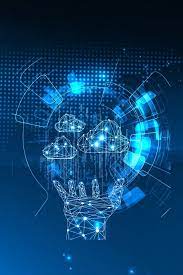CURRENT AFFAIRS
Get the most updated and recent current affair content on Padhaikaro.com
Web 3
- Vaid's ICS, Lucknow
- 19, Jan 2022

In News
The concept of Web3 used to describe a potential next phase of the internet, created quite a buzz in 2021.
Web 1.0
-
- It is the worldwide web or the internet that was invented in 1989.
- It became popular in 1993. The internet in the Web 1.0 days was mostly static web pages where users would go to a website and then read and interact with the static information.
- Even though there were e-commerce websites in the initial days it was still a closed environment and the users themselves could not create any content or post reviews on the internet.
- Web 1.0 lasted until 1999.
Web 2.0
It started in some form in the late 1990s itself though 2004 was when most of its features were fully available.
It is still the age of Web 2.0 now.
The differentiating characteristic of Web 2.0 compared to Web1.0 is that users can create content.
-
-
- They can interact and contribute in the form of comments, registering likes, sharing and uploading their photos or videos and performing other such activities.
- Primarily, a social media kind of interaction is the differentiating trait of Web 2.0.
-
Why Web3 need was felt?
- In Web 2.0, most of the data on the internet and the internet traffic is owned or handled by very few behemoth companies. This has created issues related to data privacy, data security and abuse of such data.
- Web3 offers a solution to these problems.
- There is a sense of disappointment that the original purpose of the internet has been distorted.
- It is in this context that the buzz around Web3 is significant.
About Web3
- It is also called Web 3.0.
- It is a decentralised internet to be run on Blockchain technology.
- Gavin Wood, the founder of Ethereum (a blockchain technology company) used the term Web3 first in 2014 and the past few years, many others have added to the idea of Web3.
- It would be different from the versions in use, Web 1.0 and Web 2.0.
- In web3, users will have ownership stakes in platforms and applications unlike now where tech giants control the platforms.
- Benefits
- Web3 will deliver a “decentralized and fair internet where users control their own data”.
- Web3 enables peer to peer (seller to buyer) transactions by eliminating the role of the intermediary.
- Currently, if a seller has to make a business to the buyer, both the buyer and seller need to be registered on a “shop” or “platform” like Amazon or Ebay or any such e-commerce portal.
- Platform authenticates that the buyer and seller are genuine parties for the transaction.
- Web3 tries to remove the role of the “platform”.
Facts for Prelims :
Academic Bank of Credit (ABC)
- The Centre has brought all recognised higher education institutions, irrespective of their accreditation or rankings, under the ambit of the Academic Bank of Credit (ABC).
- The government has brought the IITs, IIMs and other Institutions of National Importance (INIs) under the Academic Bank of Credit (ABC) framework, which allows students to pursue up to 50 per cent of a course from institutions other than the one with which they are enrolled.